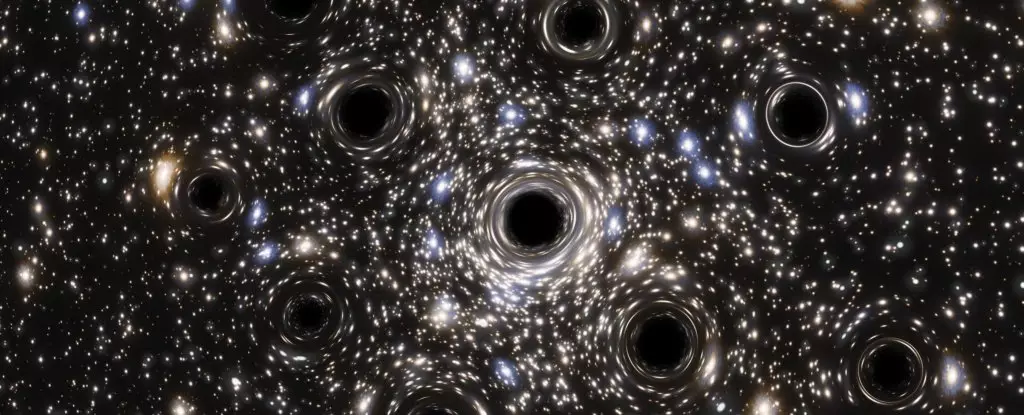Within the vastness of our universe, celestial formations often harbor secrets waiting to be unearthed. One such intriguing structure is the globular cluster known as Palomar 5. This cluster, a sprawling collection of stars stretching across 30,000 light-years and situated approximately 80,000 light-years away from Earth, has given astronomers ample material for study and interpretation. Globular clusters, considered relics from the universe’s infancy, typically contain between 100,000 to one million stars, all born from the same primordial gas cloud. These dense, spherical bodies serve as critical tools for understanding the broader cosmic history, including dark matter distribution in the galaxies they orbit.
In recent years, the exploration of other galactic formations has gained traction, particularly the study of tidal streams. These long, winding trails of stars, once elusive, have recently come into sharper focus thanks to advancements in observational technology, notably the Gaia space observatory. Gaia’s contributions have enabled astronomers to map the Milky Way with impressive precision, illuminating the existence of tidal streams that extend far across the night sky. Interestingly, while the formation of these streams has puzzled scientists, researchers hypothesize that they may originate from disrupted star clusters. Yet, until now, researchers have struggled to identify individual star clusters linked to these streams, complicating efforts to trace their origins.
Palomar 5 stands out as a unique example within the universe of astronomical research. Its long tidal stream, spanning over 20 degrees of the sky, paired with its broadly dispersed star distribution, caught the attention of scientists. The implications of studying Palomar 5 are significant; it is treated as a “Rosetta Stone” for unraveling the mysteries of tidal stream formation. Mark Gieles, an astrophysicist at the University of Barcelona, describes the urgency of understanding these phenomena, emphasizing the rarity of having a star cluster closely associated with a tidal stream. Observing Palomar 5 holds promise for shedding light on the complex interactions that lead to the formation of these stellar rivers.
A particularly captivating aspect of Palomar 5 is the suggestion that it houses a significant population of stellar-mass black holes. Research indicates that these black holes could exert profound influence over the behavior of the stars in the cluster. During simulations conducted by Gieles and his team, they incorporated black holes into their calculations. Their findings revealed that a greater number of black holes exists in this cluster than previously anticipated—nearly three times the expected amount based on star count. This insight is critical: black holes, with masses around 20 times that of the Sun, formed during the supernova explosions of massive stars, ultimately playing a key role in the dynamics of the entire cluster.
Looking ahead, the simulations suggest that within a billion years, Palomar 5 will entirely dissolve, leaving behind a collection of black holes in orbit around the Milky Way’s center. This fate indicates a broader trend, where globular clusters will likely continue to unravel over cosmic time, producing tidal streams like Palomar 5. The research emphasizes the potential for globular clusters to be breeding grounds for black holes, paving the way for future mergers, including the elusive middleweight black holes that sit between their stellar and supermassive counterparts.
As spirit scientists probe the depths of Palomar 5, they not only advance our understanding of this exceptional cluster but also enrich our comprehension of the universe’s intricate structure. Through the lens of black holes and tidal streams, researchers are beginning to appreciate the dynamic and sometimes chaotic life cycles of these celestial bodies. While observers face challenges in directly identifying black holes in clusters, the findings surrounding Palomar 5 bolster a crucial understanding: black holes formed in noble collections of stars may be pivotal players in galactic evolution. Each discovery adds another chapter to our ongoing quest to decipher the mysteries of the cosmos, revealing a universe richer and more nuanced than we ever imagined.

